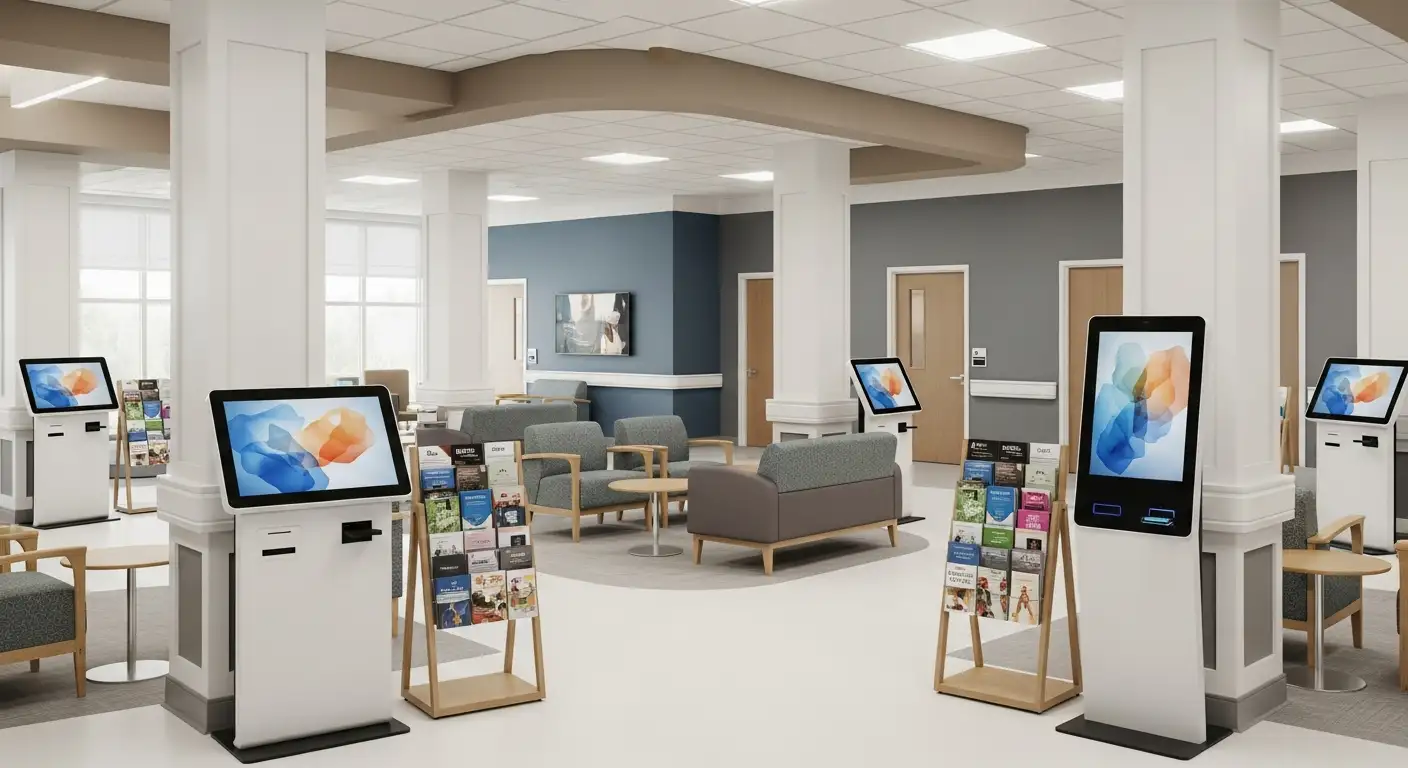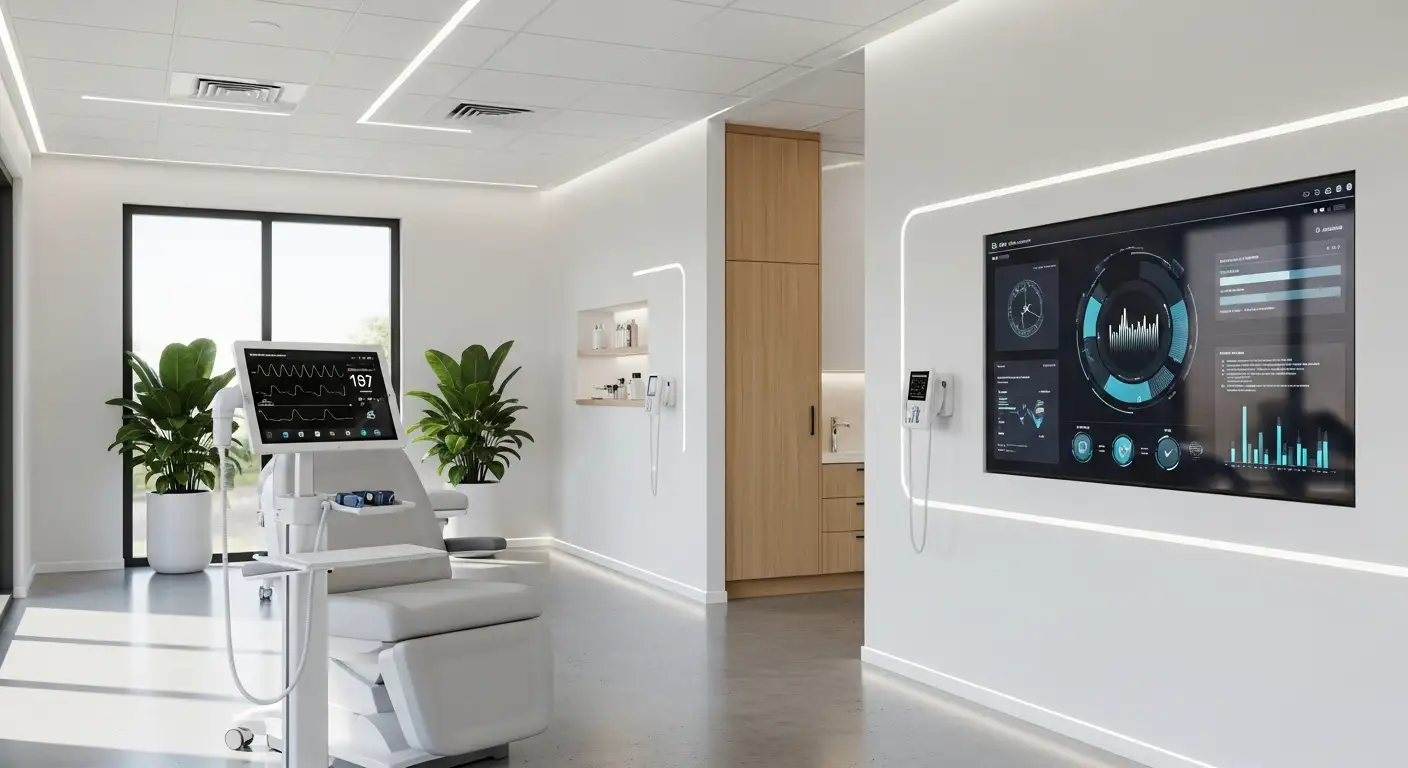Growth of Personalized Preventive Health Services

Introduction to Personalized Preventive Health Services
The landscape of healthcare is increasingly shifting from reactive treatments to proactive, personalized prevention strategies. Driven by advances in genetics, molecular diagnostics, digital health technologies, and patient-centric care models, personalized preventive health services are reshaping how health risks are identified, managed, and reduced. This article explores the growth trajectory, technological innovations, market dynamics, and impact on healthcare systems, providing a comprehensive overview of this transformative movement.
The Rationale Behind the Growing Emphasis on Preventive Healthcare
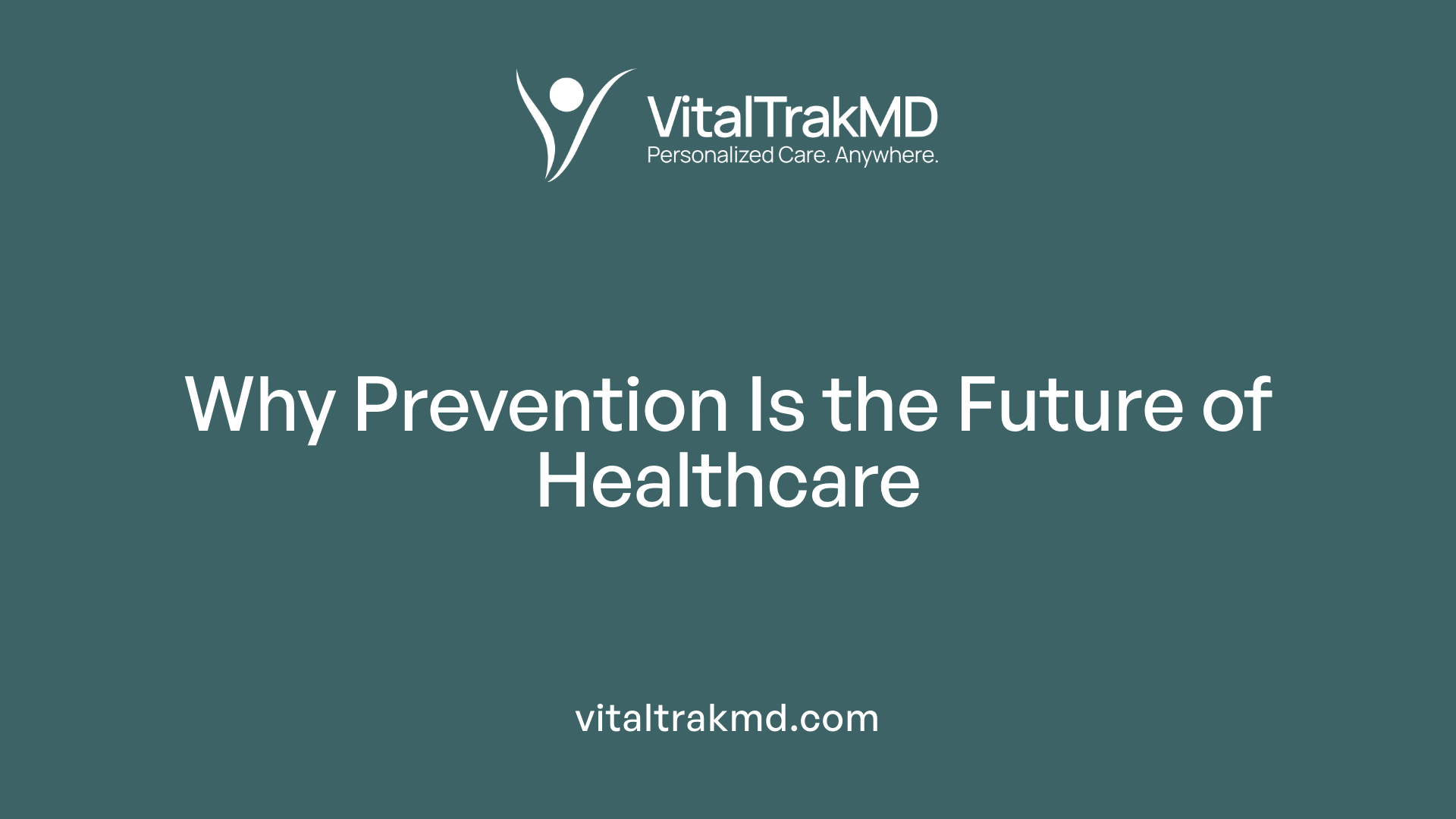
Reasons for Increasing Focus on Prevention
The shift toward preventive healthcare is primarily driven by the understanding that catching health issues early can drastically minimize their impact. Advances in genetics, biomarkers, and molecular diagnostics enable healthcare providers to identify at-risk individuals before symptoms even appear. These technologies track factors like blood lipids, glucose levels, and genetic markers, allowing for tailored interventions. Additionally, personalized health plans based on sociodemographic data and lifestyle factors have proven effective in managing health proactively.
Economic considerations also play a role. Preventive strategies often result in lower healthcare costs over time by reducing emergency room visits, hospital stays, and long-term treatment needs. As evidence accumulates demonstrating the savings and health benefits of early intervention, health systems worldwide are adopting more proactive approaches.
Benefits of Early Intervention
Early intervention allows for disease prevention or delaying onset, which enhances quality of life and reduces disability. For example, lifestyle modifications informed by genetic risk assessments can prevent conditions like cardiovascular disease and type 2 diabetes. Regular health screenings and personalized plans help identify risks at pre-symptomatic stages, enabling timely support and counseling.
Furthermore, early health management strengthens the patient–provider relationship. When individuals actively participate in health planning and understand their personal risks, adherence to preventive measures increases, leading to better outcomes.
Public Health Strategies and Social Determinants
Public health initiatives now emphasize vaccination programs, health education, and mandatory screenings to foster prevention. These efforts are complemented by addressing social determinants—factors like socioeconomic status, food security, housing, and access to healthcare—that heavily influence health equity.
Barriers such as lack of awareness, transportation issues, and cost hinder participation in preventive care. Strategies like community outreach, language support services, and policy reforms aim to bridge these gaps.
In conclusion, the increasing focus on prevention is a holistic response to the burden of chronic illnesses and disparities. By integrating technological advances, public health efforts, and social equity initiatives, healthcare systems aim to shift from reactive treatment to proactive health management, ultimately fostering longer, healthier lives for populations worldwide.
How Preventive Care Mitigates Healthcare Costs
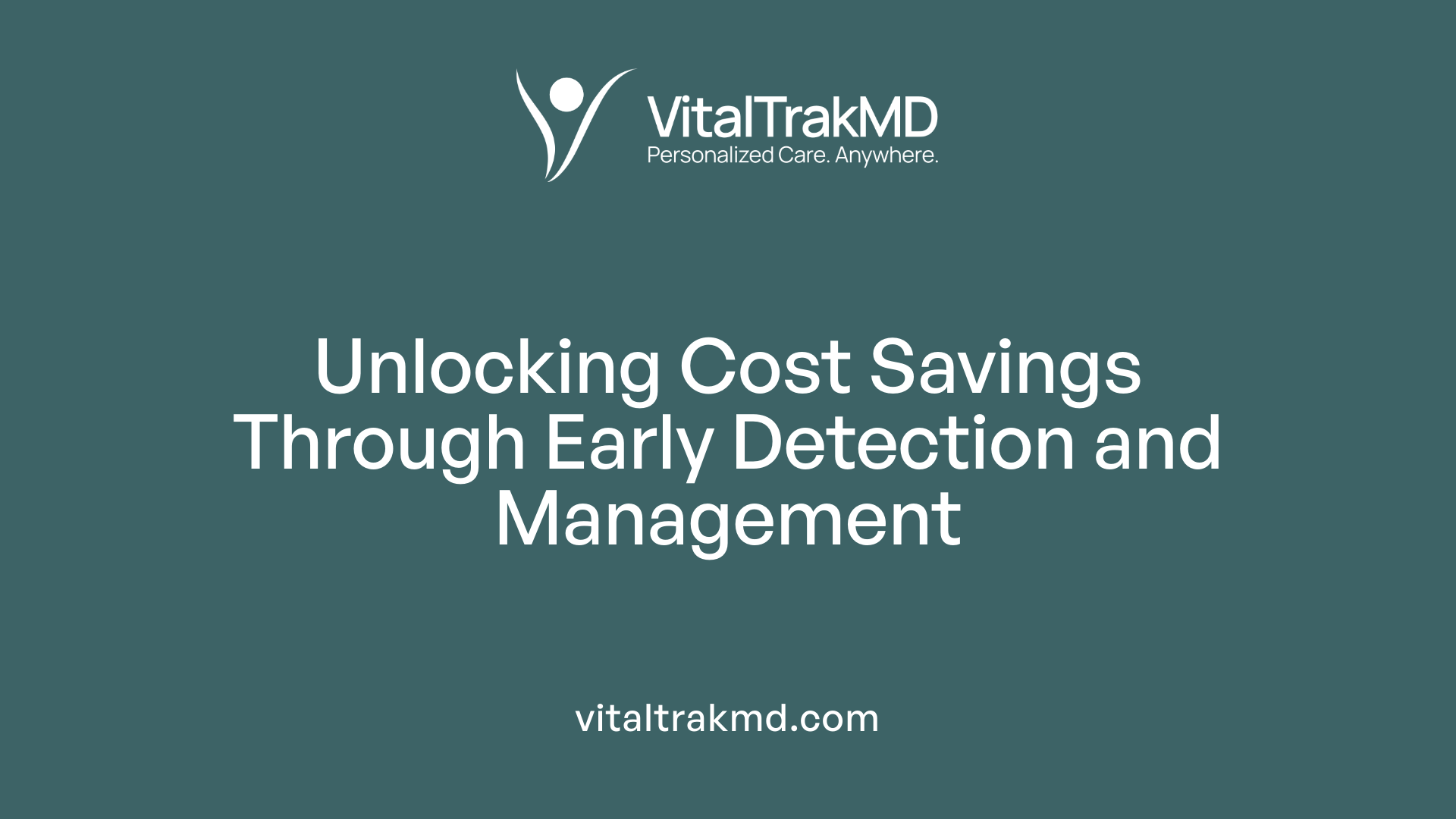
How does preventive care reduce healthcare costs?
Preventive care plays a crucial role in lowering overall healthcare expenses by focusing on early detection and management of health issues before they develop into more severe, costly conditions. By offering services like health screenings, vaccinations, and lifestyle counseling at no or low cost, more individuals engage in proactive health management.
Studies of programs such as MDVIP demonstrate that participants tend to use emergency services less often. Over a three-year period, members experienced significant reductions in ER visits and urgent care use, which translates into substantial cost savings.
Long-term research indicates that although preventive services may initially increase healthcare expenditure due to the costs of screenings and interventions, these costs are offset by decreases in hospitalizations and invasive treatments over time. By the third year, many members accrue enough savings, often exceeding the program costs.
Preventive care’s emphasis on managing chronic diseases like diabetes and cardiovascular conditions further reduces expensive treatments later on. System reforms and financial incentives that promote routine preventive services can amplify these savings, leading to a more sustainable healthcare system, healthier populations, and lower costs for everyone.
The Spectrum of Benefits, Challenges, and Successful Case Studies in Prevention
What are the benefits, challenges, and case studies related to preventive health strategies?
Preventive health strategies have a profound impact on public health, offering benefits that include lower healthcare costs, decreased rates of chronic disease, and improved quality of life through early detection and intervention. For example, personalized programs like MDVIP have shown to reduce emergency room visits and inpatient stays, leading to noticeable cost savings over time.
These strategies operate at multiple levels, from primordial prevention that tackles social and environmental factors to quaternary prevention, which aims to prevent harm from unnecessary medical interventions. Advances in genetics, biomarkers, and digital health tools have enhanced our ability to identify individuals at high risk, enabling targeted prevention.
However, implementing these strategies is not without challenges. Common obstacles include limited funding, behavioral resistance, and fragmented healthcare systems that hinder coordination. Social determinants such as income, education, and access to care also influence the success of preventive efforts.
Effective prevention requires collaboration between various stakeholders. Case studies from Wisconsin and Colorado highlight how integrated programs can increase participation, improve health outcomes, and reduce costs. These success stories demonstrate that addressing barriers through community engagement and health policy reforms can optimize preventive care.
In summary, while preventive health strategies provide substantial benefits, overcoming barriers through collaboration and innovation is essential to realize their full potential. Continued efforts to integrate personalized medicine, technology, and community programs are key to advancing public health and long-term cost savings.
Personalized Medicine: Concepts and Examples
What are some examples of personalized medicine?
Personalized medicine involves tailoring healthcare strategies to an individual’s unique genetic, biological, and environmental profile. One prominent example is genetic testing to guide medication choices. For instance, testing for the TPMT gene in leukemia patients helps determine the safest and most effective dose of thiopurine drugs.
In cancer treatment, genomic profiling of tumors enables targeted therapies. A notable example is the use of trastuzumab for HER2-positive breast cancer and vemurafenib for melanoma with BRAF mutations. These therapies specifically attack cancer cells identified by their genetic markers, improving efficacy and reducing side effects.
Pharmacogenomics, another facet of personalized medicine, examines how genetic variations influence drug responses. For example, testing for genetic differences can guide the use of aspirin or clopidogrel for blood clot prevention, and optimize antidepressant choices, as evaluated by tools like GeneSight.
Beyond genetics, the microbiome—the collection of microbes living in and on our bodies—also plays a role. Treatments and preventive strategies are increasingly based on molecular profiling of the microbiome to improve health outcomes.
Stem cell research is another advanced area, focusing on tissue regeneration tailored to individual needs, showcasing the broader scope of personalized approaches.
Overall, these examples illustrate how personalized medicine aims to maximize treatment effectiveness and safety by considering the unique biological makeup of each person, leading to more precise healthcare solutions.
Advantages of Personalized Medicine and Its Role in Prevention
What are the advantages of personalized medicine?
Personalized medicine brings significant benefits by customizing healthcare based on an individual’s genetic makeup, environment, and lifestyle choices. This tailored approach increases the accuracy and speed of diagnoses, enabling earlier detection of potential health issues.
By focusing on targeted treatments, personalized medicine helps in selecting the most effective therapies while minimizing side effects and toxicity. For instance, genetic testing can identify which medications will work best for a patient, improving overall treatment success and patient adherence.
Cost-wise, personalized strategies aim to reduce unnecessary treatments and hospitalizations, ultimately lowering healthcare expenses. Preventative interventions can delay or avoid the onset of chronic diseases, improving quality of life and reducing long-term costs.
Research advances driven by personalized medicine foster innovative discoveries, including new biomarkers and targeted therapies. This shift from reactive to proactive healthcare means better health outcomes, with emphasis on prevention, early detection, and individualized care plans.
How does personalized medicine support disease prevention?
The integration of genetic, biomarker, and behavioral data allows clinicians to assess disease risks more accurately. This enables tailored prevention strategies such as lifestyle modifications, personalized screening schedules, and early interventions.
Technologies like multi-omics, biomarker analysis, and gene-environment interaction studies help identify at-risk individuals even before symptoms appear. This precision approach facilitates timely, personalized actions that can delay or prevent disease onset.
Overall, personalized medicine enhances preventive care, fosters better patient engagement, and drives healthcare towards more effective, efficient, and patient-centered outcomes.
Challenges and Limitations of Personalized Medicine
What are the challenges and disadvantages of personalized medicine?
Personalized medicine offers many exciting possibilities, but it also faces significant hurdles. One of the primary issues is that current data may not be complete or fully representative of diverse populations. Many genetic studies are biased towards specific demographic groups, which limits the applicability of findings universally.
Costs and accessibility are another major concern. High expenses associated with advanced genetic testing, biomarker analysis, and cutting-edge diagnostics can restrict access, especially in underinsured or resource-limited settings. This creates disparities, meaning that not all patients benefit equally from personalized care.
Ethical considerations also pose challenges. The collection and use of genetic and health data raise privacy and data security issues. There are risks of genetic discrimination and concerns about informed consent, particularly when data may be used for research or commercial purposes.
Furthermore, despite technological advancements, personalized treatments are often more effective at managing or delaying disease than curing it outright. For complex conditions like cancer or autoimmune diseases, personalized approaches may still fall short of providing definitive solutions.
In summary, while personalized medicine promises tailored interventions and better outcomes, current limitations related to data diversity, cost, ethical issues, and incomplete understanding hinder its broader implementation and equitable distribution.
The Impact of Personalized Preventive Services on Healthcare Quality and Expenditure
What is the impact of personalized preventive health services on healthcare quality, utilization, and expenditures?
Personalized preventive health programs, like MDVIP, have demonstrated significant benefits in improving the overall quality of healthcare. By fostering stronger relationships between patients and physicians, and by emphasizing individualized care plans, these services enhance patient engagement and adherence to preventive measures.
One notable outcome is the reduction in emergency room and urgent care visits. Over a three-year period, MDVIP members showed decreased use of these services compared to matched nonmembers, indicating more effective management of health conditions and preventive practices. This shift not only benefits patients through better health outcomes but also alleviates pressure on high-cost healthcare services.
Regarding healthcare spending, initial investments in personalized care—such as more comprehensive wellness visits, health screenings, and lifestyle coaching—may temporarily increase expenditures. However, over time, these proactive measures lead to stabilization or even decreases in overall healthcare costs. A substantial percentage of members achieved savings exceeding the costs of their programs by the third year.
The benefits are especially evident among older adults and individuals with chronic health conditions. These groups tend to experience early and sustained savings, underscoring the value of targeted preventive strategies.
In conclusion, personalized preventive services improve the quality of care by promoting healthier lifestyles and better disease management. They also contribute to substantial expenditure savings in the long term by reducing unnecessary hospital and emergency care, ultimately fostering a more efficient health system.
The Future of Personalized Prevention: Technological Trends and Innovations
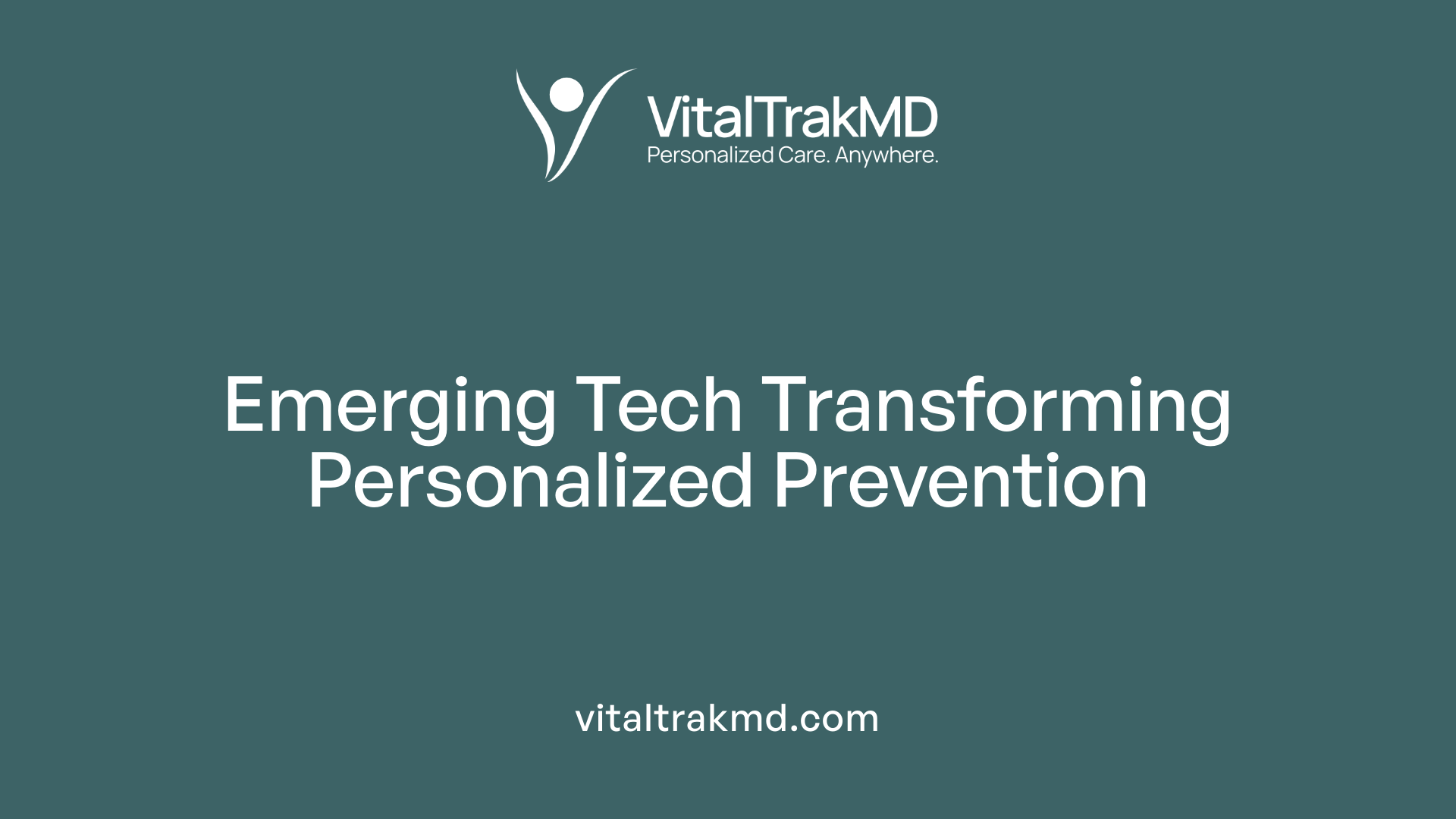
What are the future prospects and technological developments in personalized prevention?
The landscape of personalized prevention is rapidly evolving, driven by major advancements in genomics, multi-omics, and artificial intelligence (AI). These innovations are set to transform how we identify disease risks, enabling healthcare providers to implement highly tailored, early interventions.
Genomics and multi-omics technologies, including analyses of genetic markers, biomarkers like blood lipids and glucose, and microbiome profiles, are becoming increasingly precise. They allow for detailed risk stratification at an individual level, even in pre-symptomatic stages. Combining these data with AI algorithms helps predict disease development more accurately, guiding personalized prevention strategies.
Wearable devices and remote monitoring tools are now integral to proactive health management. These gadgets track vital signs, physical activity, sleep, and other health metrics in real-time. They provide continuous data streams that facilitate timely lifestyle adjustments and remind users to adhere to preventive measures.
Digital health platforms, mobile health apps, and virtual assistants are enhancing patient engagement and access. Patients can log health information, receive personalized recommendations, and communicate with healthcare providers regardless of location. Telemedicine services have also expanded, enabling remote consultations, which is especially crucial for populations facing barriers to in-person care.
These technological trends aim to shift healthcare from reactive treatment to proactive prevention. The integration of predictive data into clinical workflows will enable earlier, more effective interventions. Targeted therapies based on genetic profiles and individualized risk assessments will improve outcomes and reduce costs.
Overall, the future of personalized prevention looks promising, focusing on early detection, health promotion, and addressing healthcare disparities. As these innovations mature, they will contribute to a more efficient, equitable, and proactive healthcare system.
| Technology Area | Current Focus | Future Impact | Notable Features |
|---|---|---|---|
| Genomics & Multi-omics | Disease risk prediction | Personalized intervention planning | Biomarker analysis, microbiome data |
| Wearable Devices | Real-time health monitoring | Early detection & behavior change | Continuous data capture, alerts |
| Digital Platforms | Health info & coaching | Improved accessibility & engagement | Mobile apps, telehealth, virtual assistants |
| AI & Data Analytics | Risk stratification | Precision medicine & targeted therapies | Machine learning, predictive modeling |
This confluence of technologies will continue to shape how personalized prevention strategies are developed, making them more precise, accessible, and effective.
Projected Growth of the Global and Regional Markets in Personalized Preventive Healthcare
The market for personalized preventive healthcare is experiencing rapid expansion and is expected to continue its robust growth trajectory. In 2024, the global market was valued at approximately 417.3 billion USD, and projections indicate this figure will increase to around 981.2 billion USD by 2035. Over the forecast period of 2025 to 2035, the compound annual growth rate (CAGR) is estimated at about 5.2%, reflecting a steady rise driven by technological, social, and policy-related factors.
Regionally, North America leads the market, with a valuation of 30 billion USD in 2024. Due to ongoing technological advancements, policy pushes, and rising awareness, it is expected to double by 2035. Other regions such as Europe and Asia-Pacific are also witnessing increasing adoption, fueled by government initiatives and expanding healthcare infrastructure.
Key technological drivers include wearable devices, advanced diagnostics, genetic testing, and AI-powered platforms. These innovations facilitate early detection, personalized risk assessment, and customized treatment strategies, making preventive care more accessible and effective.
Socioeconomic factors also play a significant role. Growing prevalence of chronic diseases, aging populations, and increasing health consciousness propel demand. Government programs, corporate wellness initiatives, and increased insurance coverage for preventive services contribute further to market expansion.
This shift towards personalized medicine—integrating genomic data, biomarkers, and behavioral factors—is transforming healthcare. As innovations continue and barriers such as high costs and data privacy concerns are addressed, the market's growth is poised to accelerate.
| Market Segment | 2024 Valuation (USD) | Projected 2035 Valuation (USD) | Growth Factors |
|---|---|---|---|
| Global Market | 417.3 billion | 981.2 billion | Tech advancements, aging demographics, policy support |
| North America | 30 billion | 60 billion | Innovative health tech, healthcare infrastructure |
| Europe and Asia-Pacific | Growing steadily | Rapid expansion | Increased awareness, government policies |
| Key Technology Areas | Wearables, AI, Genomics | Bigger adoption, improved tools | Early detection, risk stratification, personalized treatments |
Looking ahead, the future of personalized preventive healthcare is poised for exponential growth, driven by ongoing technological breakthroughs like AI, big data, and genomics. These advances will make personalized medicine more precise, accessible, and cost-effective, ultimately redefining healthcare worldwide.
Industry Insights and Regional Developments
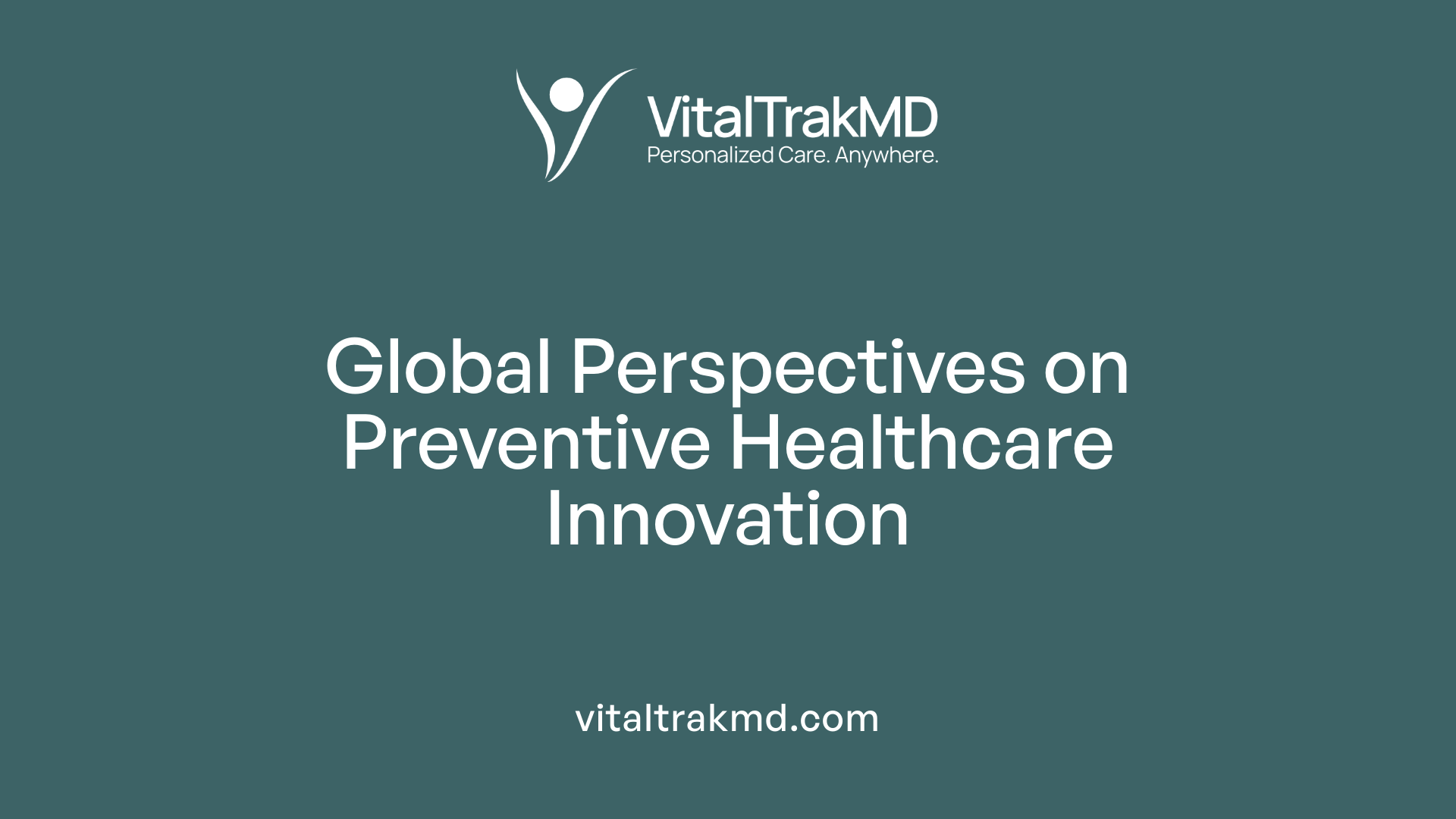 The preventive medicine market is continuously evolving, shaped by technological advances, policy support, and demographic trends across different regions.
The preventive medicine market is continuously evolving, shaped by technological advances, policy support, and demographic trends across different regions.
North America remains the dominant player, with a market value estimated at around 30 billion USD in 2024. It is projected to double by 2035, driven by widespread adoption of digital health tools, innovative biotech companies, and strong healthcare infrastructure. The region benefits from supportive policies that encourage preventive care integration into primary healthcare and substantial investments by major industry players.
Europe and the Asia-Pacific region are rapidly catching up, with increased governmental initiatives aimed at promoting holistic, personalized healthcare. Countries in these areas are adopting innovative technologies such as genetic testing and health analytics to broaden access and improve health outcomes.
Several key organizations and companies are leading the charge in personalized preventative health solutions. These include biotech firms specializing in genomics, tech giants developing health platforms, and healthcare providers expanding their preventive care options. Collaborations between academia, industry, and government agencies foster an environment conducive to innovation, research, and regulatory support.
In terms of regional policies, North America’s emphasis on quality metrics and digital health integration, combined with Europe’s focus on health equity and access, provide a favorable environment for market growth. Asia-Pacific nations are increasingly emphasizing early disease detection and lifestyle interventions, supported by investments in healthcare infrastructure.
Overall, the competitive landscape features a blend of established players, such as pharmaceutical firms and tech companies, alongside emerging startups spearheading personalized diagnostics and remote health monitoring. Policy frameworks that support innovation, funding, and access play a vital role, making region-specific strategies crucial for expanding personalized preventive health services worldwide.
| Region | Market Valuation (2024) | Growth Drivers | Policy Support | Major Players |
|---|---|---|---|---|
| North America | $30 billion | Digital health, biotech investments, innovation | Support for digital integration, quality metrics | Major tech companies, biotech firms |
| Europe | Growing rapidly | Government programs, health equity focus | Regulations for genetic testing and data privacy | Healthcare providers, research institutes |
| Asia-Pacific | Expanding fast | Policy emphasis on early detection, infrastructure | Government-led initiatives, digital health push | Local startups, global companies expanding |
This regional development landscape underscores a global shift towards personalized prevention, driven by technological innovation and supportive policies, promising a future of more proactive and tailored healthcare solutions.
Investments, Innovations, and the Path Forward in Personalized Prevention
What innovations are shaping the future of personalized prevention?
The future of personalized prevention is being shaped by significant advances across several technological and scientific fields. Investment in biotech and digital health startups is fueling the development of new tools and services aimed at early disease detection and tailored interventions.
One of the main drivers is the evolution of biomarker and genetic testing technologies. These innovations enable accurate risk stratification at an individual level, incorporating data from blood-based biomarkers such as lipids, glucose, and HbA1c, as well as microbiome analysis. Advanced genomic analyses, including polygenic risk scores (PRS) and genome-wide association studies (GWAS), are now predicting risks for conditions like cardiovascular disease, obesity, and breast cancer with increasing precision.
Artificial intelligence (AI) and machine learning (ML) are integral to enhancing risk prediction and personalized intervention plans. AI-powered analytics can process vast amounts of data—including genetic, lifestyle, and sociodemographic factors—to identify at-risk populations early. Wearable devices and remote monitoring tools equipped with AI algorithms enable real-time health data collection, providing immediate feedback and encouraging healthier behaviors.
Innovations are also expanding into new therapeutic and preventive strategies. Research into gene editing, microbiome therapeutics, and personalized vaccines aims to prevent disease onset altogether. These cutting-edge solutions are supported by policy initiatives that promote innovation and reduce regulatory hurdles, ensuring rapid translation from laboratory research to clinical practice.
Startups specializing in telemedicine and digital health are developing user-friendly platforms that facilitate personalized health coaching, virtual consultations, and continuous health monitoring. This accelerates access to preventive care, especially for underserved populations.
Overall, these technological advancements are expected to revolutionize the preventive healthcare landscape. The shift toward more precise, accessible, and cost-effective solutions will empower patients and providers alike, fostering proactive health management and reducing long-term healthcare costs.
| Area of Innovation | Key Technologies | Impact on Prevention | Future Potential |
|---|---|---|---|
| Biomarker & Genetic Testing | Blood markers, PRS, GWAS | Better risk prediction | Early detection, targeted interventions |
| AI & Machine Learning | Data analytics, predictive modeling | Personalized risk assessments | Improved predictive accuracy |
| Wearables & Remote Monitoring | Wearable sensors, mobile health apps | Real-time health tracking | Enhanced patient engagement |
| Therapeutic Developments | Gene editing, microbiome programs | Disease prevention and personalized therapeutics | Transformative preventive care |
This landscape of rapid innovation signals a promising future where personalized prevention becomes foundational to healthcare, driven by ongoing research, technological breakthroughs, and supportive policy frameworks.
More about this topic: [Innovative solutions transforming preventive healthcare]
Conclusion: Embracing the Future of Personalized Prevention
The expansion of personalized preventive health services marks a pivotal shift towards a more proactive, efficient, and equitable healthcare system. Technological advancements, market growth, and successful case studies underscore the potential for these services to improve health outcomes, reduce costs, and foster a culture of health promotion. As innovations continue to emerge and regional initiatives accelerate adoption, personalized prevention is poised to become the cornerstone of future healthcare. Embracing this transformation will require supportive policies, continued investment, and an emphasis on addressing disparities, ensuring that all populations benefit from the promise of personalized preventive strategies.
References
- The Impact of Personalized Preventive Care on Health Care Quality ...
- Components, prospects and challenges of personalized prevention
- What Is Personalized Health Care?
- Prevention Is Still the Best Medicine - News & Events
- The Future of Personalized Healthcare Technology
- Personalized Preventive Care Reduces Healthcare Expenditures ...
- 5 Recommendations for the AWV Personalized Prevention Plan
- Preventive Healthcare Technologies and Services Market 2035
- The Impact of Personalized Preventive Care on Health Care Quality ...
- (PDF) The Impact of Personalized Preventive Care on Health Care ...
Recent articles
Want to Feel Better and Live Healthier?
Join hundreds of patients taking control of their health with personalized care that fits their life – not the other way around.
Rated 4.8/5 by 32+ customers



